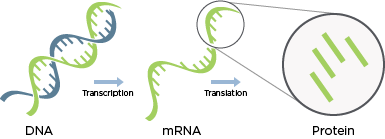- Home
- Testing
- Our Methods
- RNA Sequencing
RNA Sequencing
Next-generation sequencing has evolved into a powerful diagnostic tool helping thousands get answers to the most challenging diagnostic dilemmas. Yet, despite advances in genetics through next-generation sequencing panels, whole exome sequencing, and even whole genome sequencing, a precise genetic diagnosis still eludes many patients with presumed neurological disease. Many diagnostic reports may include one or more Variants of Uncertain Significance (VUS) that are hard to interpret as being potentially pathogenic or uninvolved. RNA Sequencing can help re-classify a VUS, both in coding and non-coding regions, as a likely disease-causing variant. Additionally, this analysis can detect gene functionality and determine expressivity in specific tissue types. To read more information regarding clinical indications for ordering transcriptome analysis, click here.

Services
Gene-Specific RNA Sequencing
The Gene-Specific RNA Sequencing Targeted Analysis includes up to five genes for variant investigation following a report with a VUS identified in a splice site or intronic region, or the variant is noted to have a potential effect on splicing. Previous sequencing analysis can be done at any laboratory.

How RNA Sequencing Can Improve Diagnostic Outcomes
Detection Of Transcription Levels
Detects up or down regulation of transcript levels
Detects changes in the relative abundance of transcript copies with tissue-specific effects
Detection Of Gene Expression Levels
Detects up or down regulation of gene expression levels
Detection Of Residual Gene Functionality
Confirms any effect of intronic or coding sequence mutations on the process of splicing
Identifies effects on gene functionality due to deletions of exons
Verification Of VUS Effects
Confirms functional effects and potential pathogenicity of a reported VUS

